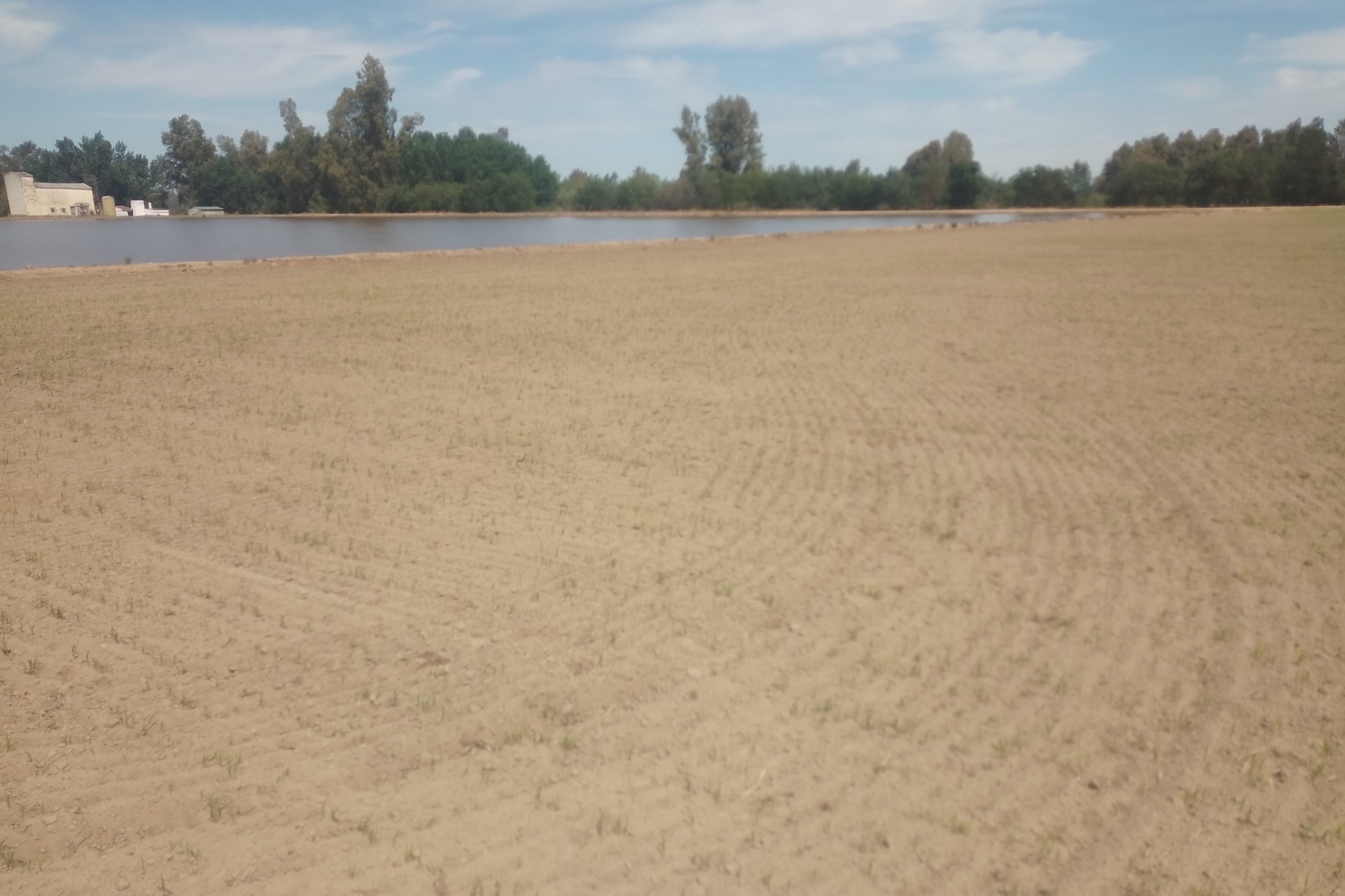
Rice and corn
 General information
General information
Rice and corn are two major summer cereal species in our region, both due to the extent of area they cover and to their importance in the final agricultural production of the region. Extremadura is the second Spanish rice-producing region, just behind Andalusia. The crop area in our region slightly exceeds 20,000 ha, which represents approximately 20% in national terms. Rice is mainly grown in the Guadiana River meadows (76% in the Badajoz province and 24% in the Caceres province). As regards corn, the crop area in Extremadura was approximately 45,000 ha in 2019, and it was more evenly distributed among both provinces (57% in Badajoz and 43% in Caceres). Its low prices in recent years has contributed to significantly reduce the regional corn area, i.e. more than 25%.
 Tests to assess commercial varieties and agronomic studies
Tests to assess commercial varieties and agronomic studies
Due to the significance of plant material for the increase in the yield of these crops, at CICYTEX, we have carried out tests to assess the commercial varieties for both species. In the case of corn, projects are carried out within the national network for the assessment of new commercial varieties of extensive crops and the results have been published on the CICYTEX webpage. Likewise, agronomic studies are also carried out, such as the influence of the rice planting methods on the yield and industrial quality of grains.
 Integrated control of weed
Integrated control of weed
The phytosanitary problems affecting rice and corn include the weeds and their effects. Many experts believe this is one of the main problems for rice crops and the problem in which most resources are invested in order to obtain a good harvest. The capacity of weed to make a strong and frequent impact on crop fields is expressed by the high rates of emergencies, growth and initial development, and in this respect special planning is required for the implementation of an Integrated Weed Management (IWM). Failing that, there is usually a single solution based on the excessive use of herbicides, in order to reduce the competition of weed with crops. Such an intensive use of products can imply, in many cases, the application of herbicides that have the same mechanism of action during the crop cycle, even with mixtures during the same application. Such failures or inadequate control measures are also the result of the misuse of products with the application of incorrect doses, the use of inadequate additives, application equipment in bad condition, weed development stage not recommended, etc. Failure recurrence in the control of weeds and the repeated use of herbicides with the same mechanism of action put a selection pressure on weed that, in the long term, becomes a risk to generate biotypes that are resistant to one kind or a class of herbicide. At CICYTEX, we have been working on weed-related issues for several crops since 2008, with our main line of work being focused on rice and, since 2019, corn. In both cases, we are working on efficacy tests with herbicides against the main weed types of these crops and we are specialised in the confirmation of resistances and in the study of the relevant responsible mechanisms. As regards rice, CICYTEX has coordinated several national projects (RTA2014-00033, RTA2017-0098), mainly focused on the confirmation of resistances in various areas. We have also worked on the technical assistance with companies mainly focused on tests with new active substances. In the case of corn, technical assistance operations have been carried out with companies relating to efficacy/phytotoxicity of various herbicides and, since 2019, we are working on Amaranthus palmeri, a type of weed that is quite dangerous to this crop, under the MIPEx project.
 Soil quality for rice crops and phytosanitary control alternatives. Diseases of rice crops in Extremadura and troubleshooting
Soil quality for rice crops and phytosanitary control alternatives. Diseases of rice crops in Extremadura and troubleshooting
The basis of a high yield and quality of the final product is, in any rice farm, directly proportional to the adequate management of soil and its fertility. The characteristics of the soil are essential for a correct development of plants and that is why CICYTEX works on this aspect since 2014. Being aware of the needs of farming cooperatives to reinforce their work on their plots of land, projects were carried out relating to the “Study of phytosanitary problems affecting the rice crops in Extremadura: weed and diseases”, with pilot plots of land having both problems, which caused significant economic losses. As regards soil quality, the results suggested that the pH was the main problem for the toxicity due to the formation of H2S and the excess of Fe2+ in the early growing stages; and this, together with excessive contributions of organic matter (harvest waste), caused the necrosis of the root apex that prevented the absorption of nutrients. Favouring the aerobic stage with dry sowing until the plant becomes larger could prevent the drastic water removals commonly used to solve these problems. Moreover, this will probably improve the competition with unwanted plants and this will be the essential starting point to obtain the correct chemical control efficiency. Dry sowing strategies and the control of the water volume to reduce anaerobiosis have been the best way to reduce the incidence of diseases. Nevertheless, the implementation mechanism of dry cultivation can be more efficient for diseases than the control of the water volume, given that drainage requires higher consumption of water (a scarce resource for most farmers). All the foregoing, together with the lack of herbicide control due to the invasion of weed (when water is removed) and the related farming works that imply an increase in the carbon footprint of crops have led to the consolidation of a regional project, i.e. IB18105 (2019-2022) “Sustainable phytosanitary control alternatives for rice crops. Management strategies against climate change”, which tries to solve both problems at once.
 Use in animal feed: circular economy
Use in animal feed: circular economy
Following the Green and Circular Economy Regional Strategy, we are studying the use of fibre by-products (husk) and rice waste (straw) in diets for animal welfare feeding of Iberian pigs.
 Waste recovery
Waste recovery
Rice straw is a difficult waste to deal with, due to its high production, the difficulty to remove it from the field because of crop flooding, and its high content of silica. That is why –due to its lack of usefulness and to the problems derived from its integration in the soil (methane emissions, phytotoxic problems…)– stubble burning permits are usually granted, which also poses an environmental issue. For that reason, CICYTEX tries to find feasible alternatives to this waste and –together with an internationally renowned engineering company (Técnicas Reunidas, S.A.) and the Spanish Federation of Chemical Industries– it has recently participated in a European project (LIFE WALEVA) in order to obtain a high added value molecule (levulinic acid) from rice straw.






